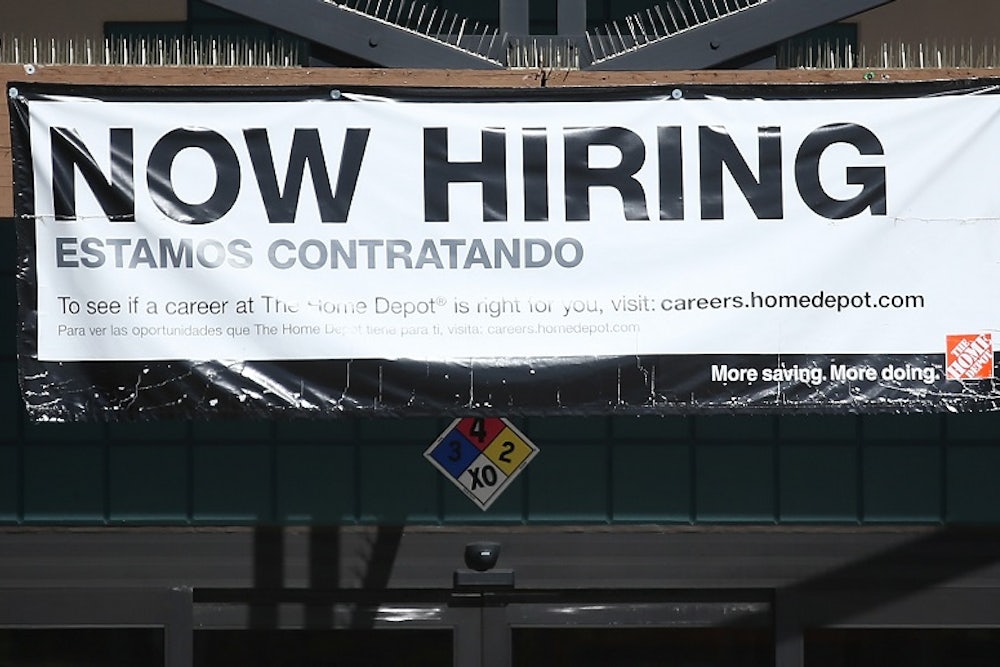The economy is back! Well, it’s back to 2008 levels at least. The economy added 217,000 jobs in May, surpassing January 2008’s record nonfarm employment of 138,365,000. Of course, the population has grown considerably over the past six-plus years. We should be well above the January 2008 level.
Overall the report slightly beat expectations of 215,000 jobs, but month-to-month jobs reports are very noisy. A better way to look at the economy is with a three-month moving average, which continues to show slow, but steady improvement:

The March and April jobs numbers were essentially unchanged, revised down a combined 6,000. The unemployment was also unchanged at 6.3 percent, but that’s not bad news. As the labor market recovers, it will draw back workers into the labor force who had previously dropped out. That’s positive for the economy. The unemployment rate may even rise a bit in the upcoming months—and we should celebrate that.
Long-term unemployment—the number of workers out of work more than 26 weeks—showed the same story as it fell another 78,000 to 3.37 million:

Conservatives expected the expiration of unemployment benefits in December would spur the long-term unemployed to accept jobs they had previously rejected. Now that their benefits were gone, the argument went, these workers would have more incentive to accept jobs instead of mooch off the government. As you can see from the graph, that hasn’t happened, but House Republicans are continuing to block the Senate deal to renew the program.
The May jobs report also comes on the heels of the European Central Bank taking unprecedented action to stem falling inflation and boost the economy. Inflation hit a low of 0.5 percent in the Eurozone this week. Many people mistake low inflation as a good thing, but it can be deadly for an economy. Debtors have trouble paying back their debts. Real wages adjust much slower. The Eurozone is currently stuck in the pattern. ECB President Mario Draghi announced Thursday that the central bank would cut interest rates to negative 0.1 percent for the first time ever and offered hints that quantitative easing would soon follow. It’s yet to be seen whether these steps will help shake the Eurozone out of its lowflation trap, but the market greeted the news positively.
As for the Federal Reserve, this report will not change its plan to continue reducing its quantitative easing program. The Fed began tapering its asset purchases in December as it saw signs of stronger growth in the economy. But a very weak winter created fears that those signs would not actually result in a greater growth. In fact, last week’s GDP report found that the economy contracted 0.1 percent in the first quarter of 2014. Economists brushed aside the news, attributing the weak report to a drawdown in inventories and little growth in the housing sector due to the weather. This jobs report will reinforce that view. The economy is not contracting. It’s growing—albeit at a pace that is still nowhere near good enough, especially for the long-term unemployed.
This post has been updated.
